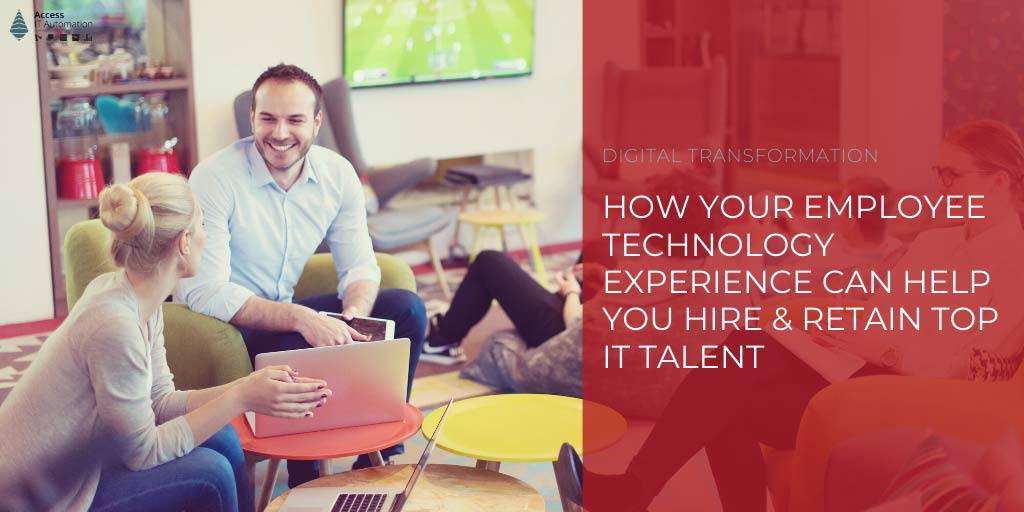For years, enterprises have struggled to hire and retain outstanding talent. According to the Wall Street Journal, there were 918,000 open IT jobs to fill in the last three months in the United States. In the United Kingdom, things are just as dire and are expected to increase in intensity as the new UK’s IR35 legislation takes effect. This is expected to result in a furious scramble to scoop up the best IT talent before any competitors can sign them up.

To solve this issue, enterprises are competing by offering perks and benefits to lure top talent, e.g., with financial incentives such as six-figure incomes and bonuses, but also with creative perks such as on-site fitness and wellness facilities, daycare, and other nice-to-haves. Yet, it takes now 66 days to fill a tech role — a huge jump from the 55 days it took in 2016 — costing the company on average about $50,000 in lost revenue.
Once the role is filled, you will need to retain that employee. Most millennials, who make up 75% of the workforce now, will move on after only three years, and 60% of millennials say they are open to a job change should the right opportunity present itself. LinkedIn has found that the technology sector has one of the largest turnover rates with 13.2%, but things are about to get much worse. According to the Work Institute, the employee turnover rate is expected to climb to 35% by 2023 — resulting in enormous cost and disruption.
So what can you do?
Your Employee’s Technology Experience Matters — Greatly
To improve your retention chances, it is critical to provide a great employee experience rather than to focus only on golden handcuffs with financial benefits because doing the latter makes you a commodity, and your competitor could simply offer more money to lure your employees away.
Besides giving your employees a worthwhile mission to rally behind and make them feel like their contributions are making an impact, it is important to provide a great technology experience.
It starts by providing them with the tools they need to do their job. According to a ServiceNow study entitled “The Employee Experience Imperative“, 45% of newly hired employees struggle to go through a standard on-boarding process because they cannot “obtain information and answers to basic questions, like finding a company policy or resolving an issue with their equipment.”
Furthermore, 59% of employees do not think that their employer made it easy for them to select their equipment before starting the job, and an astonishing 9% believe that it was hard to even receive the equipment required to do the job they were hired for! This results in a drop of employee enthusiasm about the job by 22 percentage points shortly after.
Modern devices and applications also make a huge difference. A Dell survey has shown that two out of three workers from Gen Y and half of 30+ workers feel that the technology they use at home is more effective and productive than what they use at work.
The impact is significant: 96% of the organizations who scored in the top 25% of the IBM Employee Experience Index research study say that the employee experience is positively associated with work performance, while companies who scored lowest on the Employee Experience Index are more than twice as likely (44%) to experience turn-over compared to their peers (21%) in the top 25%.
What Can You Do To Improve Your Employee Technology Experience?
While there are a lot of things you can do, we have found that automation has had the greatest impact on your employee technology experience. Moving to a holistic Evergreen IT strategy that emphasizes small, iterative upgrades (rather than lengthy big-bang migrations) will keep your IT environment more secure, up-to-date, and compliant — hence, providing a better, more consistent experience. For example, you can:
- Accelerate your upgrade velocity to have your entire estate upgraded to the latest OS and app release as soon as possible,
- Prevent devices and apps from breaking or slowing down by proactively upgrading them on an ongoing basis,
- Provide a consistent experience on all types of devices (through application compatibility/performance testing and verification of app availability),
- Allow them to bring their own devices (if they wish to do so) while keeping everything secure and protected with modern device management,
- Provide employees with self-service capabilities to run their own fixes by using a wizard to quickly diagnose problems and apply the right fix, and
- Tightly manage your IT as a service that allows employees to work on what they want from where they want, while enforcing security policy compliance without hindering or restricting them.
What are you doing to give your employees the best possible employee technology experience? Have you found one way more effective than another? Please share with us in the comments!